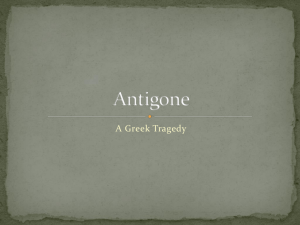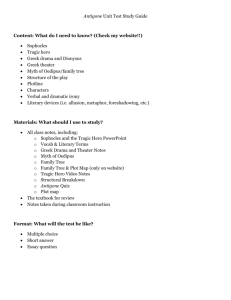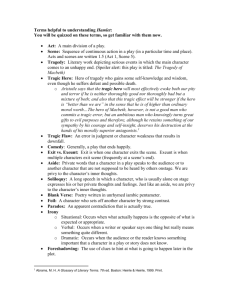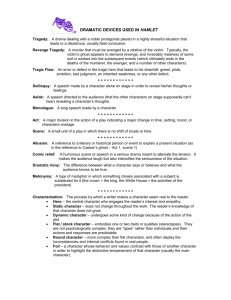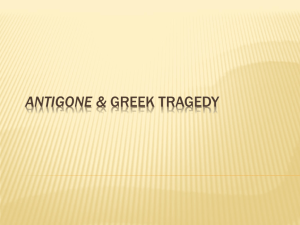The Greek Theater - ShawnStallsworth
advertisement
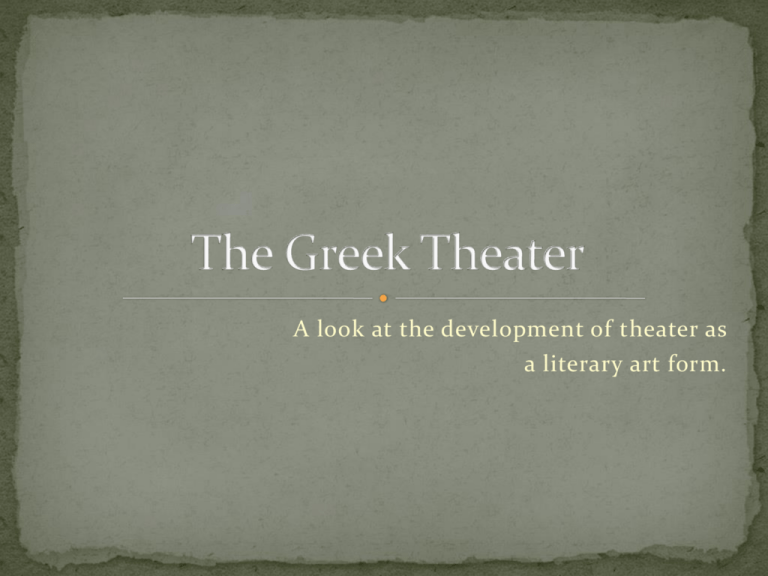
A look at the development of theater as a literary art form. In your textbook, turn to p. 1064. Read the notes on the origin of Greek drama, theater and tragedy. Create target notes in your binder: In the center, record: GREEK DRAMA In the middle circle, record the categories (1Religious Origin, 2- The Theater, 3- Actors and Chorus, 4-Tragedy and the Tragic Hero, 5Mythological Sources and 6-Greek Deities) from the text and a basic definition In the outermost circle, define the terms related to each category. Thespis: ? Given credit for being the first to put an individual actor on the stage., separate from the chorus. Aeschylus (525B.C.-456 B.C.): Put two actors on the stage together, separate from the chorus, in order to create conflict. Sophocles (496 B.C. – 406 B.C.): First to add a third actor to the stage and increase the size of the chorus. Euripides (480 B.C.-406 B.C.): The third of the great tragedians of classical Athens. Dionysus was the god of wine and fertility and patron of the performing arts. Two major Athenian festivals honored Dionysus . •The most important was known as the City, or Great, Dionysia, held in late March. •The Lenaea was a winter festival. •After three tragedians were chosen to compete in the Great Dionysia, wealthy private citizens assumed the production costs. Held in the Theater of Dionysus on the south slope of the Acropolis, the festival featured three tragedians, each of whom would put on a tetralogy of plays, consisting of three tragedies and a “satyr play.” Tragedy: A play with heroic or noble characters and an unhappy ending. Serious themes are addressed. Comedy: A play with ordinary people as characters and a happy ending. Satyr play: A play that takes serious themes and treats them comically or even lewdly. The skene was a long building found in the background of the stage and served as a backdrop and a changing station. The actual stage was known as the orchestra. It was a large area between the skene and the audience. The theatron was where the audience sat. Prologue: First scene of the play. Provides background info and establishes conflict. Parodos: The first choral ode, which provides further background and moral commentary. Scene/Choral Ode: Each scene involves three or fewer characters and the chorus. Scenes develop the action and reveal characters’ qualities and flaws. Each scene is followed by a choral ode, sung by the chorus and developing themes of the play. Exodos: The final scene. This is where the catastrophe occurs (the disastrous conclusion that involves multiple deaths and the hero’s ruin). The hero achieves his tragic realization here. The tragic hero at the center of a tragedy is a person of high rank who accepts his or her downfall with dignity. The tragic hero is a common archetype. A tragic flaw is an error in judgment or a weakness in character, such as hubris. The tragic hero recognizes the flaw and its consequences, but only after it is too late. This realization helps to redeem his character. Changed masks to change characters Mask acted as a megaphone
